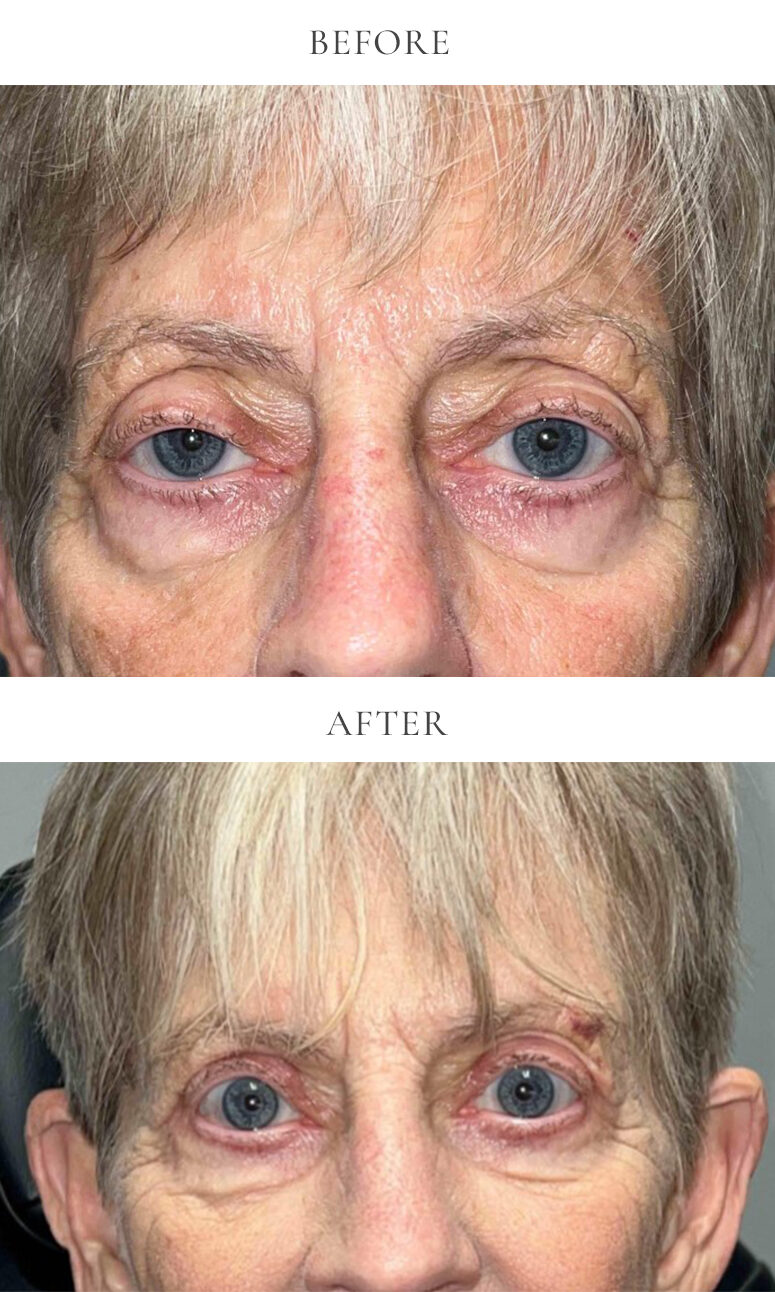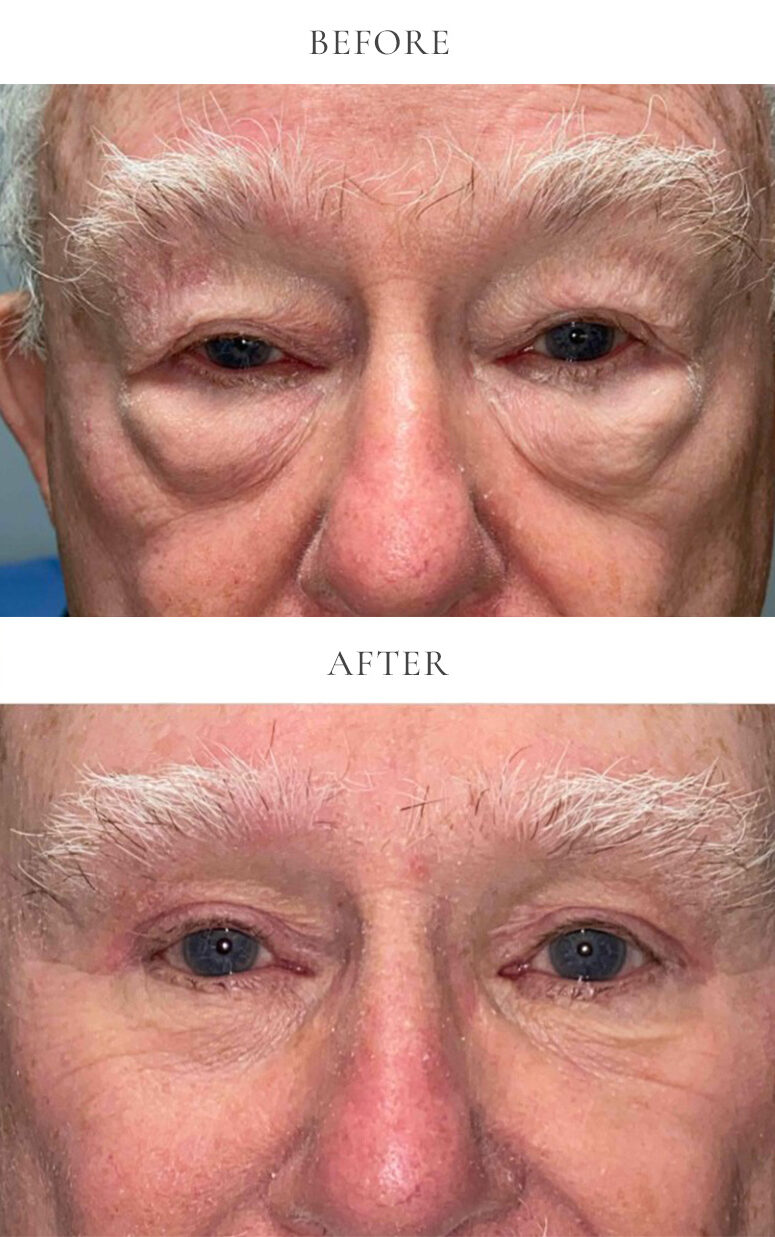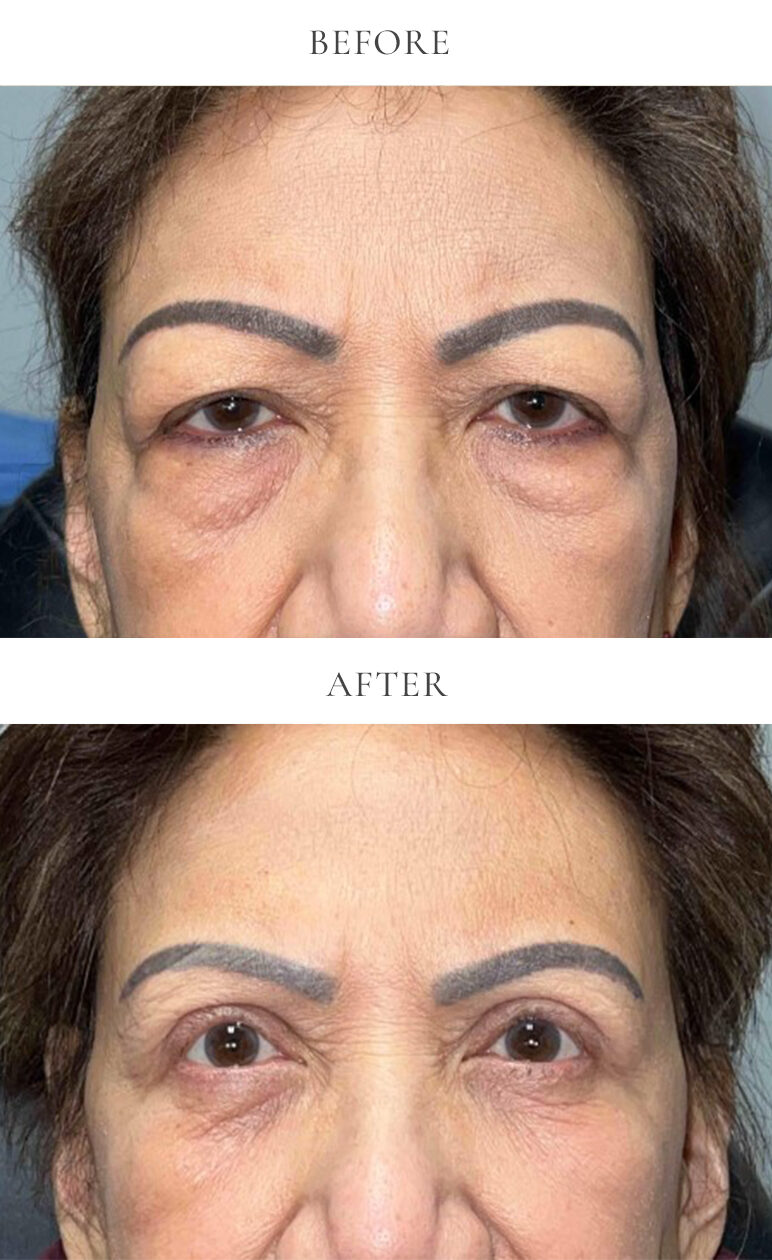Ptosis Repair
What is Ptosis?
Ptosis, also known as a droopy eyelid, is the medical term for the drooping of the upper eyelid. This condition may affect one or both eyelids. Since it is the upper eyelid that droops down, ptosis may block the upper field of your vision. The drooping eyelid may be considered mild or severe. Mild ptosis occurs in the form of a partially drooping eyelid. Severe ptosis occurs in the form of a drooping eyelid that covers the pupil completely.
What Causes Ptosis?
There are many causes of ptosis. The most common type of ptosis, aponeurogenic ptosis, is caused when the levator muscle and tendon stretch out. This is the main eyelid opening muscle. Age, wearing contact lenses, sleeping on your side or your face, eye rubbing, and genetics can predispose you to aponeurogenic ptosis.
If ptosis is present at birth, it is called congenital ptosis. As a child, improper development of the levator muscle (the main muscle that operates the upper eyelid) may cause the eyelid to droop. Blocked vision in a baby or young child can cause long term problems with vision development, called amblyopia. A droopy eyelid in a baby or young child should be evaluated urgently by an ophthalmologist.
Life threatening neurologic problems such as Horner’s Syndrome, a third nerve palsy, and myasthenia gravis can also cause ptosis. If your surgeon is concerned about a neurologic cause of your ptosis, they may recommend more testing before proceeding with surgery.
What is the Process Like for a Ptosis Repair?
The most common treatment for ptosis involves making an incision in the eyelid crease and tightening the main muscle that opens the eye (the levator muscle). The main goal of ptosis surgery is to open the upper eyelid wider to improve the field of vision. Ptosis repair is achieved in an outpatient setting using local anesthesia or light sedation.
Since ptosis repair includes operating on abnormal muscles, there are many variables that may affect the outcome of your ptosis repair. Symmetry within 1mm is typically considered a success. There is always a possibility that the eyelid will be placed higher or lower than desired, or the curve and shape of the eyelid turn out different. Touch-up surgery to improve eyelid position may be necessary. While perfect symmetry between the two eyelids can never be guaranteed, the vast majority of patients see a great improvement in their eyelid position and are happy with their results.
When Should I Consider a Ptosis Repair?
You should consider undergoing a ptosis repair if you experience:
- Difficulty keeping your eyes open
- Eyebrow aching that stems from the extra effort needed to raise your eyelids
- Eye fatigue, especially when reading
- In severe cases, it may be necessary to tilt your back or lift the eyelid with a finger in order to see out from under the drooping eyelid(s)
If you experience any of these aforementioned issues, consider contacting us to set up a consultation with one of our board-certified oculofacial plastic surgeons.
For more information on post-operative care, click here. The content on this page is generalized information and is not medical advice. You will receive your own customized instructions from our providers.
For before and after pictures of our ptosis repair procedure, click here.
Dr. Nicole Langelier

Upper Eyelid Blepharoplasty, Ptosis Repair
Dr. William Bearden

upper eyelid Blepharoplasty, ptosis repair, lower eyelid bleph with fat transfer and laser resurfacing
Dr. Nicole Langelier

Upper Eyelid Blepharoplasty, Ptosis Repair
Gallery |
